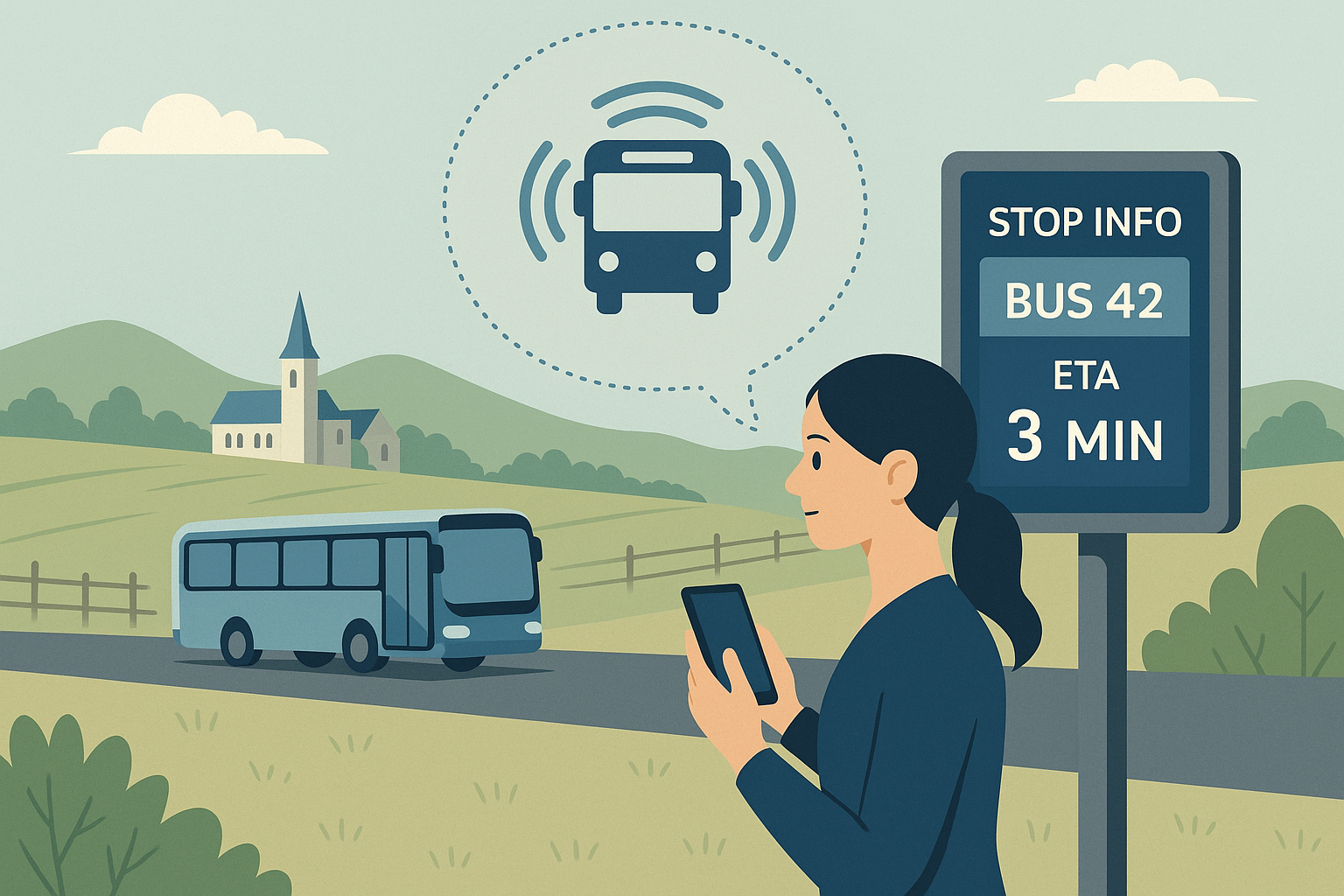Real-Time Data and the Future of Rural Bus Services
In many rural and small-town areas across Europe, public bus services are under mounting pressure. Low population density means fewer passengers. Fewer passengers lead to lower fare revenue. And in the background, public funding — long the lifeline of these routes — is increasingly uncertain. The result is a difficult question that local authorities and bus operators must confront: how can rural bus services remain financially viable in a changing world?
Traditionally, transport planners have relied on static models and manual reporting to shape timetables and justify subsidies. But the world has changed. Passengers now expect live updates and digital maps. Governments demand evidence of efficiency. And operators themselves need clearer insight into how their services are actually used — not just how they were designed to work.
This is where real-time data, and specifically the GTFS Realtime (GTFS-RT) format, is quietly becoming a game-changer.
At its core, GTFS-RT enables the public and software systems alike to know where a bus is, whether it’s on time, and how it’s performing in real-world conditions. While this technology has long been associated with major city transit networks, it holds perhaps even more value for smaller systems — where every vehicle, every passenger, and every euro spent must count.
For rural operators, real-time data provides something they’ve often lacked: evidence. Evidence that a service is being used. Evidence that passengers are affected by reliability issues. Evidence that certain trips could be optimized or merged without affecting essential mobility.
It also shifts the dynamic between operators and funding authorities. Instead of requesting support based on fixed schedules and projections, operators can offer transparent, up-to-date information about actual service delivery. This can strengthen the case for continued or increased subsidies and help build trust with local communities.
There is also a passenger-side benefit. Even in low-frequency areas, knowing that a bus is five minutes late — rather than wondering whether it came early and was missed — can make the difference between choosing public transport or not using it at all. Real-time data builds confidence, and confidence builds ridership.
Moreover, this data can lay the foundation for smarter rural transport models. Systems like demand-responsive transport, school-based routing, and community bus services all benefit from the ability to monitor, adjust, and communicate changes in real time. Without real-time feeds, these innovations remain difficult to scale.
Of course, deploying real-time systems can seem daunting for small operators with limited IT resources. But new tools — like BusPay GTFS Planner — aim to bridge that gap. By converting basic GPS and schedule data into GTFS-compliant feeds, and even offering full data management services, these platforms allow rural networks to participate in the digital transit ecosystem without needing an in-house development team.
In the end, rural transport may never be “profitable” in the market sense — but it can be smart, efficient, and transparent. And that, in turn, may be the key to keeping it alive.
Real-time data isn’t just for cities. It’s a foundation for future-proofing public mobility, no matter how small the town.

